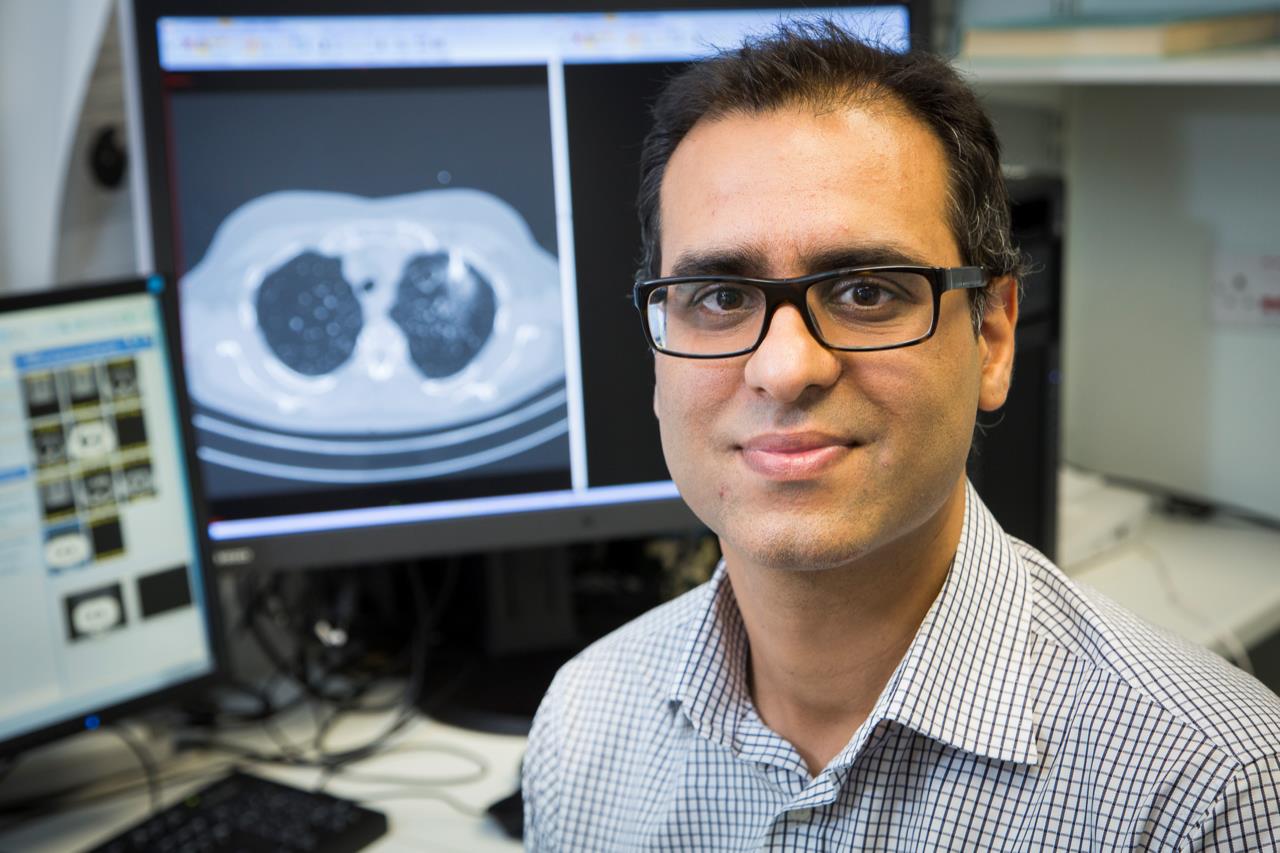
Guidance written by radiology doctors at the Royal Free London is helping to ensure NHS staff can deliver better care to COVID-19 patients.
Most patients with suspected COVID-19 are given a chest x-ray or CT scan when they first arrive in hospital.
The images can be used to give an indication of whether the patient has ‘classic’ COVID-19 before the swab test results come back from the lab, which means patient care can be more effectively managed during this interim period – and crucially reduce the risk of infection spreading further in the hospital.
The scans, which are carried out by the radiographers and interpreted by clinical radiologists, will show whether there is any inflammation in the lungs which is potentially caused by the COVID-19 virus.
The new national guidance on how imaging can be used in the care of COVID-19 patients has been developed with significant input Dr Sam Hare, lead consultant chest radiologist at the Royal Free London NHS Trust.
Dr Hare said: “Because London had its initial wave of cases earlier than the rest of the country, we found ourselves driving the new approach forward. I’m part of the British Society of Thoracic Imaging (BSTI), so have been able to feed learnings from the Royal Free London up into national guidance. Having a standard template for reporting allows radiologists to deal more confidently with potential COVID-19 cases.”
Dr Hare says that a huge part of his work during the initial phase of the pandemic was to ensure that the equipment used did not become an area where infection can spread between patients and so his team moved to a two-scanner model.
He said: “We decided to designate our scanners as ‘clean’ or ‘COVID’. This means that we can ensure that patients without suspected COVID-19 are scanned using entirely clean equipment. It also ensures that we can dedicate some of our equipment to getting those crucial COVID-19 scans, allowing us to move through patients more rapidly.”
The pivotal role that radiology plays in diagnosing patients means that radiographers – as crucial Allied Health Professionals - have also found themselves on the frontline of the COVID-19 response. Thousands of chest x-rays have been performed, requiring incredibly close contact with nearly all COVID-19 hospital patients.
“It’s great to see that we as radiographers are starting to get more recognition,” says Michael Ayeni, radiology superintendent at Barnet Hospital. “Many of our team have needed to self-isolate, which means that we have had to adapt to a new way of working with limited capacity. For me, it’s been important that we treat our radiographers like any other frontline staff.”
 Translate
Translate